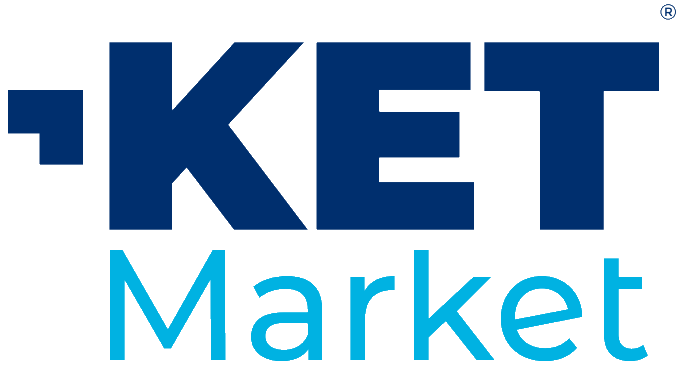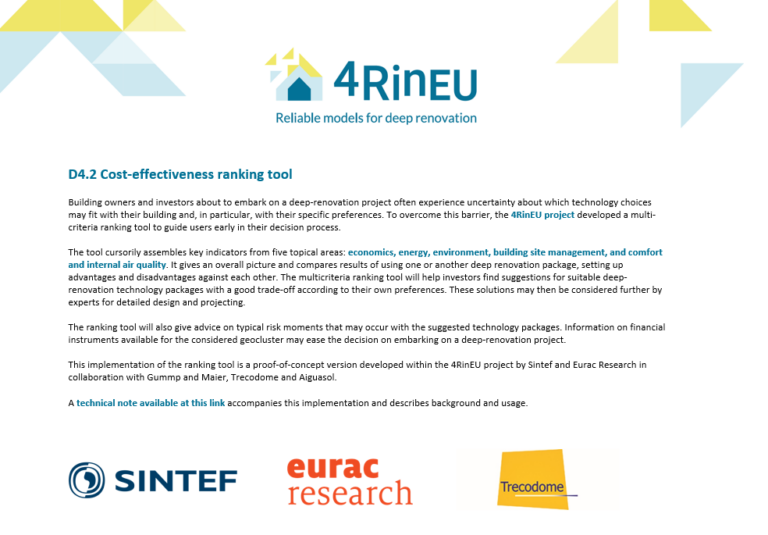Result description
A barrier for building owners and investors about to embark on a deep-renovation project is often uncertainty about which technology choices may fit with their building and, in particular, with their specific preferences. This outcome is a multicriteria ranking tool that will assist users early in their decision-making process. As an early step in the decision process, the multi-criteria ranking tool is aimed at building owners and investors, guiding them to narrow down their initial ideas about deep renovation of their building.
The multicriteria ranking tool collects and organizes indicators from five subject areas: economics, energy, environment, building site management, and comfort and internal air quality.The tool helps to narrow down the users’ initial ideas to a number of suggestions for suitable deep-renovation technology packages in line with their preferences and priorities. It gives an overall picture and comparison of the results of using one or another deep renovation package, without exactly assessing their performance with respect to given goals. The multicriteria ranking tool can assist investors in determining the benefits (e.g., energy savings or a smoother construction process) and drawbacks (e.g., risks and costs) of various deep-renovation packages.Experts may then consider the proposed solutions further for detailed design and projecting.In addition, the ranking tool will give advice on typical risk moments that may occur with the suggested technology packages. Information on financial instruments available for the geocluster under consideration may help to ease the decision to embark on a deep-renovation project.
Addressing target audiences and expressing needs
- Business partners – SMEs, Entrepreneurs, Large Corporations
This tool explains the level of risks and failures in the renovation chain, allows the different stakeholders (in particular investors) to evaluate risk of investment, responsibilities, achievable performance results and relative uncertainty, as well as related costs.
- Other Actors who can help us fulfil our market potential
R&D, Technology and Innovation aspects
Further development of the ranking tool and the underlying repository may comprise a more direct connection of the tool with, e.g., the simulations via the repository. This can provide more tailor-made KPI values such that the user can adjust, e.g., building-archetype features to make them fit better with their actual building. Then, the tool may calculate some values rather than read pre-calculated values from the repository. This may, for example, be relevant for KPIs that are easily scalable (e.g., costs for air handling units whose number depends on the number of apartments) or that can be adjusted to longer lifetimes or interest rates (e.g., NPV). More or more detailed indicators may help to uncover the DRPs’ potential for energy saving, peak shaving or the like by separating production and demand better. The division of the KPIs into the five topics of interest may be replaced by a version where the user can choose freely between all KPIs and assign priorities to them. The displayed KPI values may also be compared against, e.g., current policies or energy-saving requirements. However, this may pose similar challenges as for the “Financial instruments” topic: often such policies or requirements are specific to other features and contain more dimensions and conditions than handled by the tool. They are prone to frequent changes and updates. It may also be challenging to set simple numbers against which the renovation packages can be compared, not at last since the tool refers only to generalized building archetypes. Possibilities for the user to add more geocluster-specific information to see effects on various technology set-ups may be worth-while to consider.
Result submitted to Horizon Results Platform by SINTEF AS

